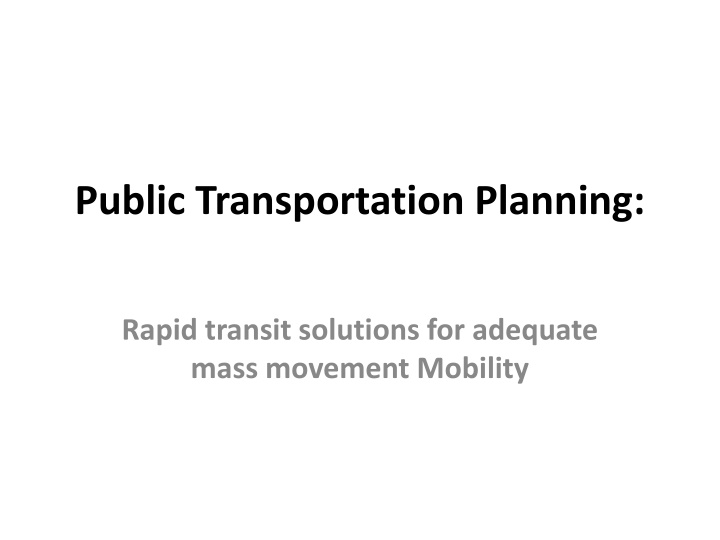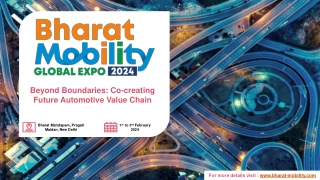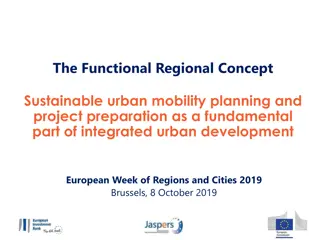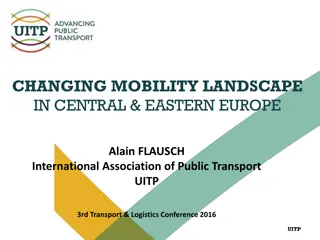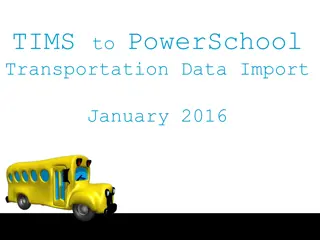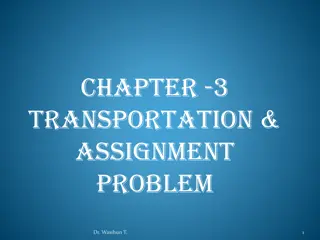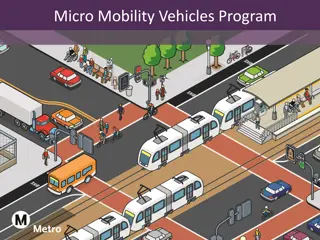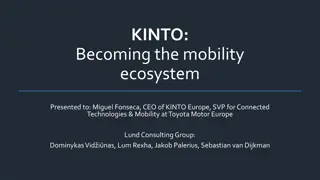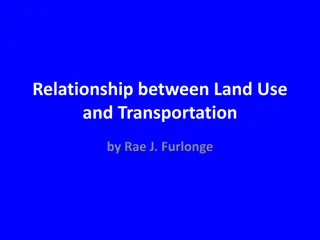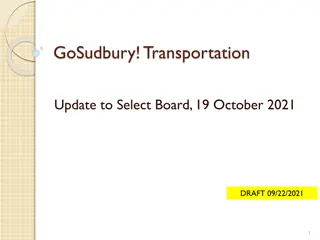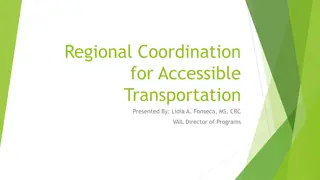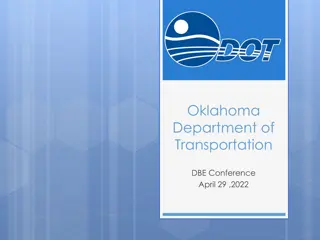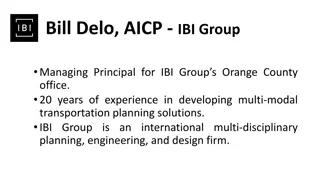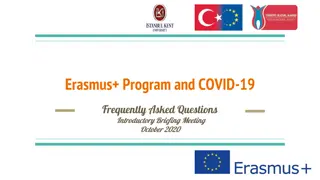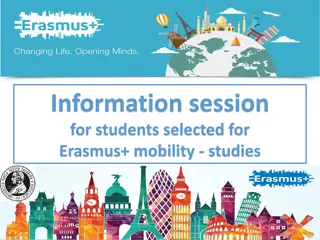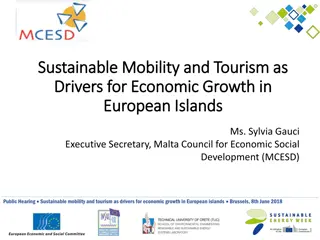Efficient Public Transportation Planning for Mass Mobility
Rapid transit solutions like high-capacity public transportation systems, including overground rail, underground rail, trams, and BRT systems, play a crucial role in enhancing mass movement efficiency. Factors such as journey time, transport costs, vehicle operating costs, and the benefits of rapid transit solutions are essential considerations in public transportation planning. Understanding the different cost components and infrastructure requirements of rapid transit modes can guide decision-making for sustainable and effective transportation systems.
Download Presentation

Please find below an Image/Link to download the presentation.
The content on the website is provided AS IS for your information and personal use only. It may not be sold, licensed, or shared on other websites without obtaining consent from the author.If you encounter any issues during the download, it is possible that the publisher has removed the file from their server.
You are allowed to download the files provided on this website for personal or commercial use, subject to the condition that they are used lawfully. All files are the property of their respective owners.
The content on the website is provided AS IS for your information and personal use only. It may not be sold, licensed, or shared on other websites without obtaining consent from the author.
E N D
Presentation Transcript
Public Transportation Planning: Rapid transit solutions for adequate mass movement Mobility
What is Rapid Transit? High capacity public transportation system. Includes o Over ground rail including LRT and monorail o Underground rail o Trams o BRT system
Transport Cost: Journey Time Factors affecting journey time o Distance to destination o In-vehicle time Speed o Time spent at interchange points Frequency of service Reliability of service
Transport Cost (cont.): Cost of fixed facilities Capital cost o Roads o Buildings, parking lots Depreciation Maintenance Environmental cost
Transport Cost (cont): Cost of vehicle ownership Capital cost Depreciation Maintenance cost Insurance cost Taxes
Vehicle operating cost Labour Fuel Wear and tear Maintenance of vehicle Depreciation Accidents External cost
Cost of Rapid Transit Cost savings include o Journey time saving o Accident savings on road o Reduced road congestion o Environmental cost savings including
Other Costs Over ground (heavy) rail oHigh capital cost per km for implementation oHigh infrastructure maintenance cost oOperating cost per revenue km Low where demand is high
Other Costs (cont.) : Underground rail oVery high capital cost per km for implementation Infrastructure cost (tracks, etc.) oOther cost similar over ground rail
Other Costs (cont): Light rail and Trams oCapital cost per km for implementation oLower infrastructure maintenance cost oOperating cost per revenue km
Other Costs (cont.): Bus rapid transit (BRT) oLower capital cost per km for implementation oOperating cost per revenue km
Other high occupancy vehicles (HOV) Cost of single occupant car Carpooling Other HOV
BRT (Bus Priority) System for Barbados To meet current and future transportation needs Suitable for low population density urban areas
Benefits of BRT Low capital cost Low operating cost Uses existing infrastructure Same vehicle can be used as a regular bus Various external benefits
Implementation Uses existing road network Can be implemented in phases Single-direction traffic flow in high density areas Dedicated left lane for buses and HOVs Re-design of existing bus routing pattern Priority for buses
Implementation (cont.) Restriction on private cars in certain areas Integrated with other types of transportation Park and ride facilities High quality of service o Frequency o Standard of service
Implementation (cont.) Franchised system oBuses owned by Government oOperations regulated by transport authority oCompetitive bidding for franchise oFranchise given to operator providing highest quality service at lowest cost
Implementation (cont.) Evaluation of proposed system oMonte Carlo simulation
Other Issues Demand Location of facilities o Shopping centres o Schools o Industrial estates o Housing
Transport Cost: Cost of vehicle ownership include Capital cost Depreciation Maintenance cost Insurance cost
